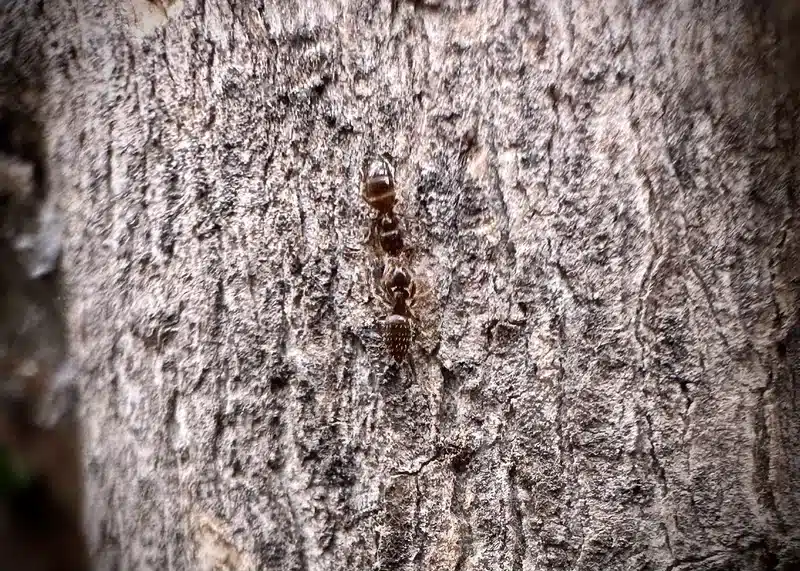Nothing ruins a peaceful morning like discovering a line of tiny sugar ants marching across your kitchen counter. These small invaders seem to appear out of nowhere, especially after a few warm spring days. As someone who’s spent decades helping homeowners in Virginia, Maryland, and DC deal with ant problems, I’ve seen how quickly these little pests can go from a minor annoyance to a major headache.
The term “sugar ant” isn’t actually a specific species - it’s what most people call any small ant that shows up looking for sweet treats in their home. Understanding what you’re dealing with is the first step to getting rid of them for good.
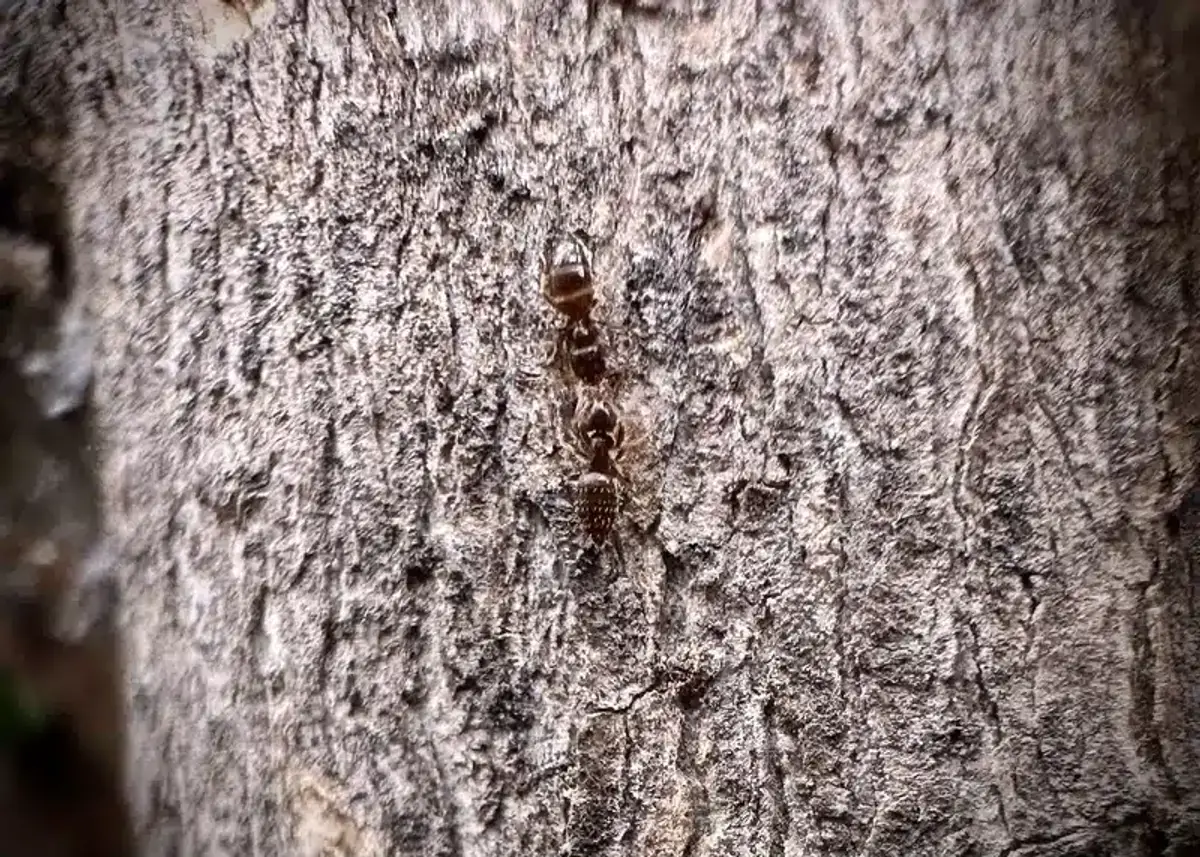
What Are Tiny Sugar Ants?
Tiny sugar ants is actually a catch-all term for several different species of small ants that prefer carbohydrates. These ants are typically less than 3mm in size and have a strong attraction to sugary substances. In our region, we commonly see five main types that homeowners mistake for “sugar ants.”
What makes these ants particularly frustrating is their size. They can squeeze through gaps as small as 1/32 of an inch - thinner than a credit card edge. Additionally, many of these species live in colonies with multiple queens, which means they can split into new colonies when threatened, making control more challenging.
Most homeowners first notice them in kitchens or bathrooms, typically around sinks and countertops. I remember getting several calls in one week alone about tiny sugar ants showing up after some warmer spring days. The key to effective control is proper identification and understanding their behavior patterns.
Common Types of Tiny Sugar Ants in Virginia, Maryland & DC
Odorous House Ants
The most common culprit in our area is the odorous house ant. These ants measure about 1/16 to 1/8 inch long and appear brown to black in color. Their most distinctive feature is the strong “rotten coconut” smell they release when crushed.
They build shallow nests under debris outside but readily move into wall voids around hot-water pipes when weather conditions change.
What does the science say?
According to Extension entomologists, odorous house ants are the second most serviced pest ant by professionals nationwide. University research shows these ants can establish satellite colonies when their primary nests are disturbed, making professional treatment essential for complete elimination.
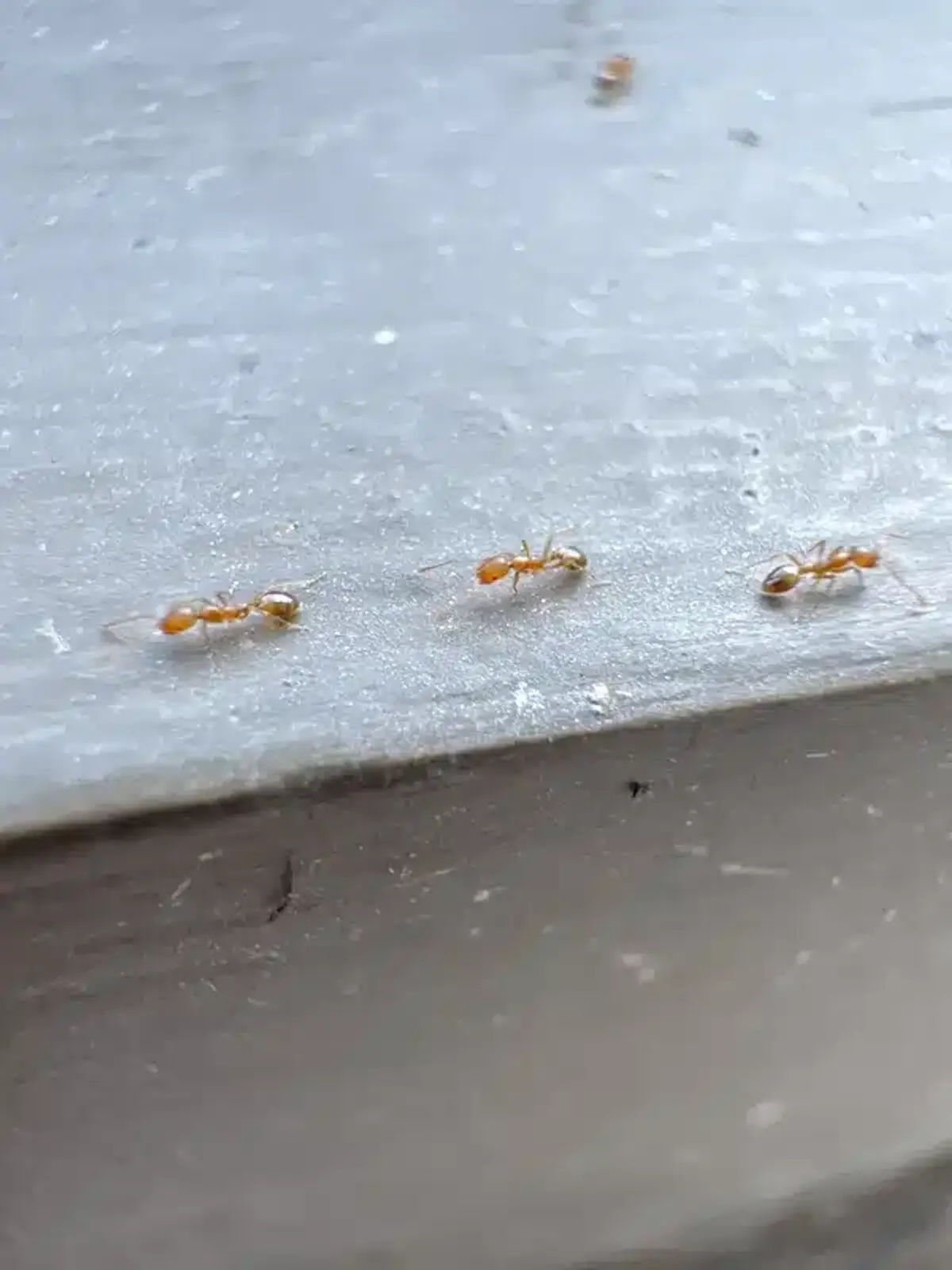
Pavement Ants
Pavement ants are slightly larger at about 1/8 inch long and dark brown to black in color. You’ll often spot the cone-shaped soil mounds they create between sidewalk cracks. These ants have fine grooves on their head and thorax that help distinguish them from other species.
Research from NC State Extension shows these colonies can contain over 10,000 workers. They’re particularly common in homes with slab-on-grade construction and become active during spring “ant wars” between neighboring colonies.
Little Black Ants
True to their name, little black ants are about 1/16 inch long and shiny black in color. They’re widespread throughout the eastern United States and adapt well to various nesting sites, from lawns to masonry to areas under carpets.
Pharaoh Ants
Pharaoh ants are particularly concerning because they’re strictly indoor pests in our climate. These tiny yellow-tan ants with darker abdomens are about 1/16 inch long. They thrive in hospitals, apartments, and food processing facilities.
What makes pharaoh ants especially problematic is their role as disease carriers. Studies published in the Journal of Medical Entomology have identified them as mechanical vectors of over 12 pathogens, including Salmonella and Staphylococcus, particularly in healthcare settings.
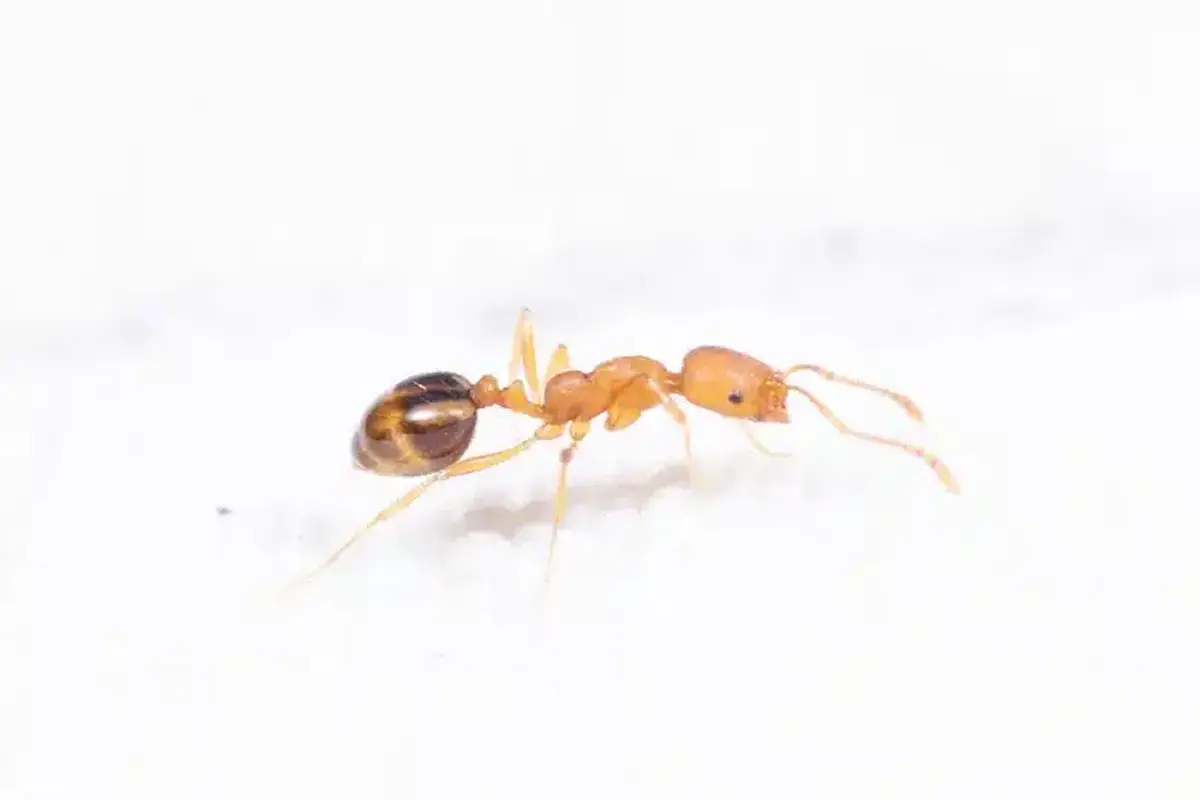
Thief Ants
The smallest of our common species, thief ants measure only 1/32 inch long and appear yellow to light brown. They’re often confused with pharaoh ants but have much smaller eyes. These ants prefer protein and grease over sweets and get their name from stealing brood from other ant colonies.
Why Tiny Sugar Ants Invade Your Home
Understanding what attracts tiny sugar ants to your home is crucial for both treatment and prevention. These ants aren’t just randomly wandering in - they’re following specific attractants that signal food, water, and shelter opportunities.
Food Sources
Research from Virginia Tech shows that odorous house ants show the highest intake efficiency with 20% sucrose solutions - roughly the same concentration as regular soda. This explains why spilled drinks, fruit juice residue, and even pet food bowls become major attractants.
A single 20% sucrose spill can provide enough energy to feed 5,000 odorous house ants for an entire day. Even microscopic food residues on counters, around appliances, and in recycling bins can sustain foraging activity.
Moisture Requirements
Tiny sugar ants also need consistent moisture sources. Condensate lines, leaking faucets, and even potted plant trays provide the water they need to survive. In our area’s climate, homes naturally create moisture through heating and cooling cycles, which attracts ants seeking this resource.
Weather Triggers
Weather patterns significantly influence ant invasion timing. Heavy spring rains flood pavement ant galleries, forcing them to seek higher ground - often through foundation cracks into your home. Conversely, drought conditions drive odorous house ants indoors to find moisture around plumbing fixtures.

Common Entry Points for Tiny Sugar Ants
Finding where tiny sugar ants enter your home is essential for long-term control. Through thousands of inspections, I’ve identified the most common vulnerabilities that allow these small invaders access to your living space.
Foundation cracks and expansion joints represent the primary entry routes, especially for pavement ants. These openings may appear minor to homeowners but provide superhighways for ant colonies. Slab penetrations where utilities enter the home also create gaps that ants exploit.
Unsealed areas around cable lines, gas connections, and HVAC penetrations frequently allow access. Door thresholds, window weep holes, and gaps around sill plates also provide entry opportunities. In my experience, identifying these entry points - often tiny cracks around windows, doors, or plumbing - has been key in helping customers get lasting results.
Common Entry Points Checklist
- Foundation: Cracks in concrete, expansion joints, and slab penetrations where utilities enter
- Doors & Windows: Gaps under door thresholds, window weep holes, and unsealed sill plates
- Utilities: Unsealed areas around cable lines, gas connections, and HVAC penetrations
- Vegetation Contact: Tree branches, vines, and mulch creating bridges to your home
Vegetation contact creates another major pathway. Vines, tree branches touching roofs or gutters, and mulch or leaf litter against siding essentially create bridges that ants use to access your home’s upper levels.
Professional Treatment Methods for Tiny Sugar Ants
Effective treatment of tiny sugar ants requires a strategic approach that targets the entire colony, not just the workers you see. Our registered technicians follow evidence-based treatment protocols that have proven successful across thousands of homes in the DMV area.
Targeted Baiting Systems
Baiting represents the core of effective ant control because it eliminates the source - the colony itself. We use active ingredients like hydramethylnon, fipronil, and boric acid in concentrations proven effective by university research.
The key is matching the bait matrix to the specific species and season. Carbohydrate gels work best for odorous house ants, while protein-based baits target pharaoh and thief ants. Rotating bait types when food preferences shift maximizes effectiveness.
| Ant Type | Preferred Bait | Active Ingredient |
|---|---|---|
| Odorous House Ants | Carbohydrate gels | Hydramethylnon |
| Pharaoh Ants | Protein-based baits | Fipronil |
| Thief Ants | Protein & grease baits | Boric acid |
What does the science say?
According to Colorado State Extension, rotating bait types when food preferences shift maximizes effectiveness. Research shows that ant colonies can shift dietary preferences seasonally, requiring professional monitoring and bait adjustment for optimal results.
Non-Repellent Barrier Treatments
Our technicians apply non-repellent insecticides around the home’s perimeter and in key interior areas. Unlike repellent sprays that simply push ants elsewhere, non-repellent materials allow ants to contact the treatment and carry it back to their colonies.
For interior applications, we focus on crack and crevice treatments around entry points, behind appliances, and along baseboards. This targeted approach minimizes exposure while maximizing effectiveness against foraging workers.
Integrated Approach
Successful control combines multiple tactics. We start by disrupting existing trails with soapy water, then deploy strategic bait placements before applying perimeter treatments. This integrated approach addresses both immediate activity and long-term prevention.
Our comprehensive sugar ant elimination guide provides detailed information about proven treatment techniques that target entire colonies rather than just visible workers.
Getting Rid of Sugar Ants: Prevention Strategies for Long-Term Control
Preventing tiny sugar ants from returning requires ongoing attention to the conditions that attract them. Through decades of service in Virginia, Maryland, and DC, we’ve developed prevention strategies specifically tailored to our region’s climate and housing styles.
Sanitation Practices
Daily counter cleaning removes the microscopic food residues that sustain ant foraging. Store all food in airtight containers, including pet food, which often gets overlooked. Weekly vacuuming along baseboards removes food particles and disrupts pheromone trails.
Pay special attention to areas around appliances where crumbs accumulate. Even small spills can feed thousands of ants, so immediate cleanup prevents establishment of foraging trails.
Moisture Management
Address moisture issues that attract ants to your home. Repair leaking faucets immediately, insulate pipes that collect condensation, and redirect downspouts at least three feet from your foundation. These steps eliminate the water sources that sustain ant colonies.
Structural Modifications
Quarterly caulk inspections help identify and seal new entry points before they become major access routes. Install door sweeps and screen vents with 1/16-inch hardware cloth to prevent ant access while maintaining ventilation.
Our detailed guide on professional vs. DIY ant control compares various prevention techniques and explains when professional intervention becomes necessary for long-term success.
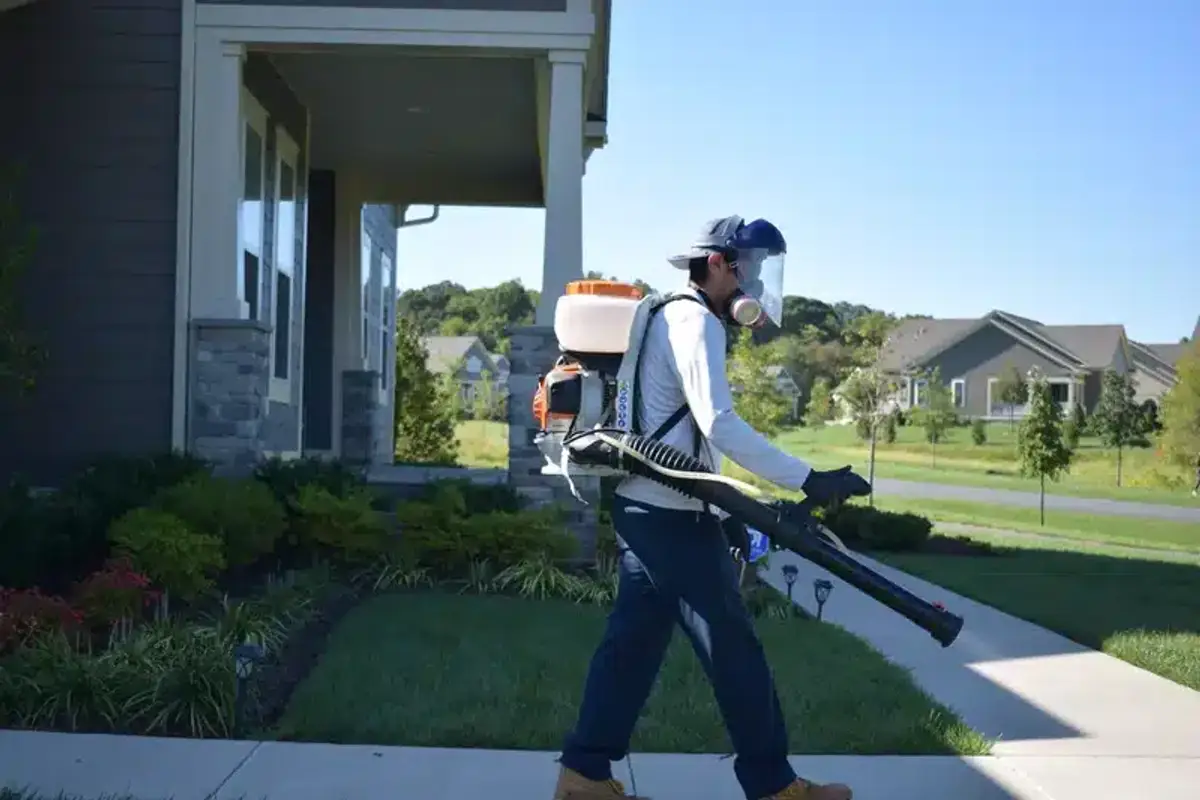
When to Call Professional Pest Control Help
While some tiny sugar ant problems respond to DIY approaches, certain situations require professional intervention. Large colonies, multiple species infestations, and recurring problems typically need expert assessment and treatment.
Pharaoh ants, in particular, require professional treatment because improper control attempts can cause colony fragmentation, making the problem worse. These ants can split into over 50 daughter colonies when stressed by repellent treatments.
If you’re dealing with ants in sensitive areas like bathrooms or kitchens, professional treatment ensures thorough elimination while maintaining household routines.
Our registered technicians bring 300 years of combined experience to every ant problem. We’ve eliminated 9 harsh chemicals common in our industry, choosing better alternatives that are effective while being appropriate for homes with families and pets.
Seasonal Considerations for Sugar Ant Control
Understanding seasonal patterns helps predict and prevent tiny sugar ant invasions. In our mid-Atlantic climate, ant complaints spike from April through October when outdoor honeydew is abundant and indoor temperature gradients favor foraging activity.
Spring represents the critical intervention period. Early-season bait placements in March intercept colony expansion before peak foraging begins. This proactive approach prevents larger infestations during warmer months.
Fall treatments focus on ants seeking shelter from cooler weather. Many species attempt to establish indoor overwintering sites during this period, making prevention treatments particularly valuable.
Even winter requires attention, as heated homes create warm microclimates that support continued ant activity. Our experience with ant behavior during winter helps predict where problems might develop during colder months.
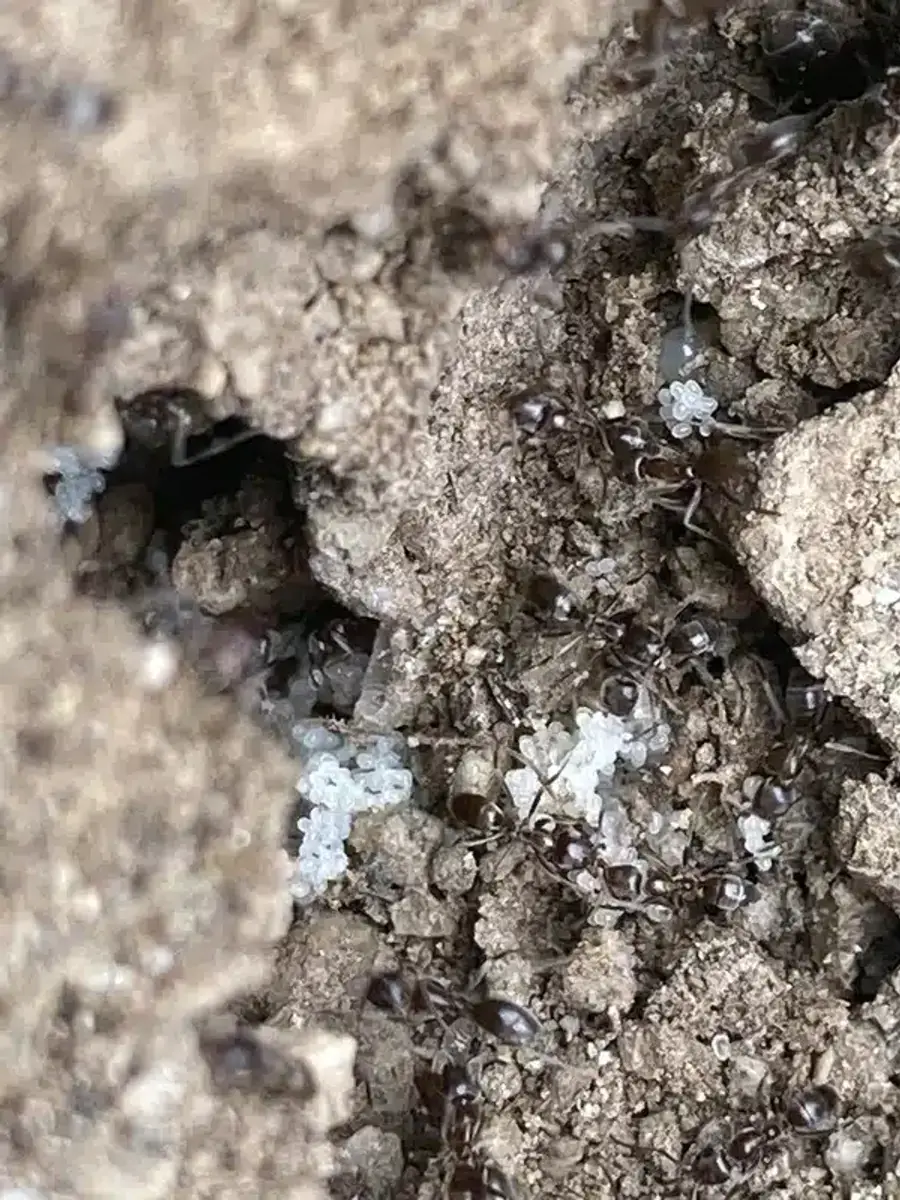
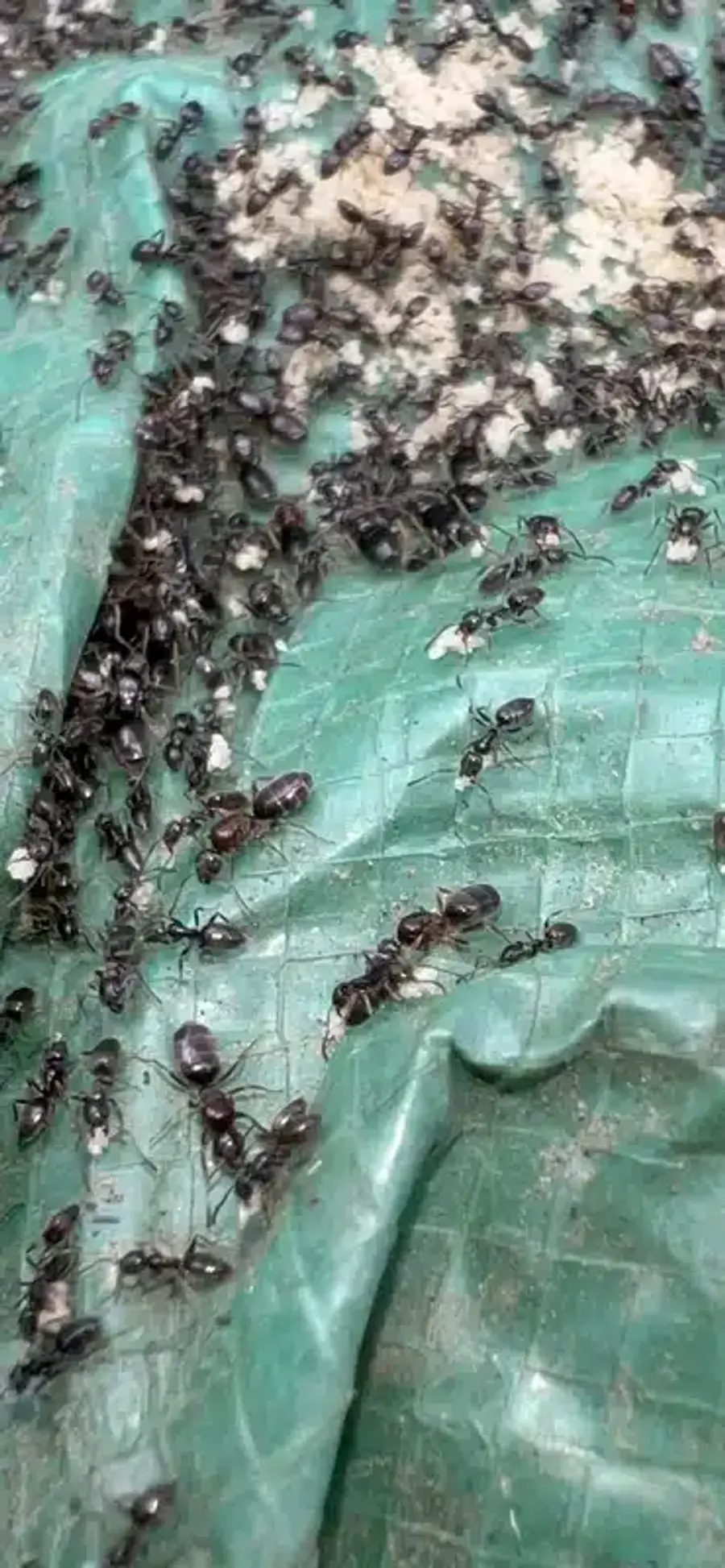
Getting Rid of Sugar Ants: Alternative Control Methods
Homeowners often ask about DIY options for controlling tiny sugar ants. While professional treatment provides the most reliable results, certain household products can provide temporary relief for minor infestations.
Boric acid mixed with sugar creates an effective homemade bait, though proper concentration is critical for success. Our detailed analysis of whether baking soda kills ants explains the science behind common home remedies and their limitations.
Diatomaceous earth applied in crack and crevice areas can provide some control, though it works slowly and requires precise application. Coffee grounds, cinnamon, and other repellent substances may temporarily deter ants but rarely provide long-term solutions.
The challenge with DIY approaches is that they typically target only the workers you see, not the colonies producing them. Professional treatment addresses the source of the problem for lasting results.
Understanding Ant Colony Dynamics
Successfully eliminating tiny sugar ants requires understanding how their colonies function. Most species in our area live in colonies with tens of thousands of workers and multiple queens, which complicates control efforts.
Workers you see represent only 5-10% of the total colony population. The remaining ants - including queens, larvae, and pupae - remain hidden in protected nest sites. This explains why surface treatments often provide only temporary relief.
Colony reproduction occurs through swarming events, typically in late spring and summer. Winged reproductive ants emerge from established colonies to form new ones. Understanding ant lifespans and colony development helps predict when intervention will be most effective.
Many tiny sugar ant species exhibit polygyny - multiple queens per colony. This adaptation allows colonies to survive even if individual queens are eliminated, making comprehensive treatment essential for success.
If you’re dealing with persistent tiny sugar ants in your Virginia, Maryland, or DC home, don’t let the problem grow worse. Our registered technicians have the experience and tools to identify the specific species you’re facing and implement targeted treatment strategies. Call us at 703-683-2000 for a comprehensive inspection and customized treatment plan, or email us at info@bettertermite.com to discuss your specific situation. We provide free unlimited callbacks until your ant problem is completely resolved.
Frequently Asked Questions
What attracts tiny sugar ants to my home?
+
Tiny sugar ants are primarily attracted to three things: food sources (especially sugary spills and crumbs), moisture from leaks or condensation, and shelter in wall voids or protected areas. Even microscopic food residues can sustain entire colonies, which is why thorough cleaning is essential for prevention.
How can I tell what type of tiny sugar ant I have?
+
Identification involves observing size, color, and behavior patterns. Odorous house ants smell like rotten coconut when crushed, pavement ants create small soil mounds between cracks, and pharaoh ants are yellow-tan and prefer indoor environments. Professional identification ensures proper treatment approaches.
Why do sugar ants keep coming back after I spray them?
+
Surface sprays only kill the workers you see, not the colony producing them. Additionally, some species like pharaoh ants actually fragment into multiple colonies when stressed by repellent treatments. Professional baiting systems target the entire colony for lasting elimination.
Are tiny sugar ants dangerous to my family?
+
Most tiny sugar ants are primarily nuisance pests, but pharaoh ants can carry over 12 different pathogens including Salmonella and Staphylococcus. Any ant species can contaminate food surfaces, making proper identification and elimination important for household health.
When is the best time to treat for sugar ants?
+
Early spring (March) represents the optimal treatment timing because it intercepts colony expansion before peak foraging begins. However, active infestations should be treated immediately regardless of season to prevent population growth and colony establishment.
How long does it take to eliminate a sugar ant infestation?
+
Professional baiting systems typically show initial results within 7-14 days, with complete colony elimination occurring within 3-6 weeks. The timeline depends on colony size, species involved, and environmental factors. Some species may require ongoing monitoring for several months.
Can I prevent sugar ants without using pesticides?
+
Prevention strategies include thorough sanitation, moisture control, and structural exclusion through caulking and sealing. While these methods reduce attractants and access points, established colonies typically require targeted treatment for complete elimination.
What should I do if I see winged ants indoors?
+
Winged ants indoors usually indicate an established colony nearby, particularly if seen during winter months. This suggests pavement ants nesting under heated slabs or other species with indoor colonies. Professional inspection can locate the source and provide appropriate treatment.
With five years of hands-on experience in the pest control industry, George Schulz is a registered technician with the Virginia Pest Management Association and a proud third-generation professional in a family business that’s been protecting homes for over 57 years. He manages and trains a team of service pros while also leading internal research efforts—recently spearheading a deep-dive review of thousands of documents on pest control materials to hand-pick the most kid and pet friendly, most effective solutions tailored specifically for homes in the DC metro area.
